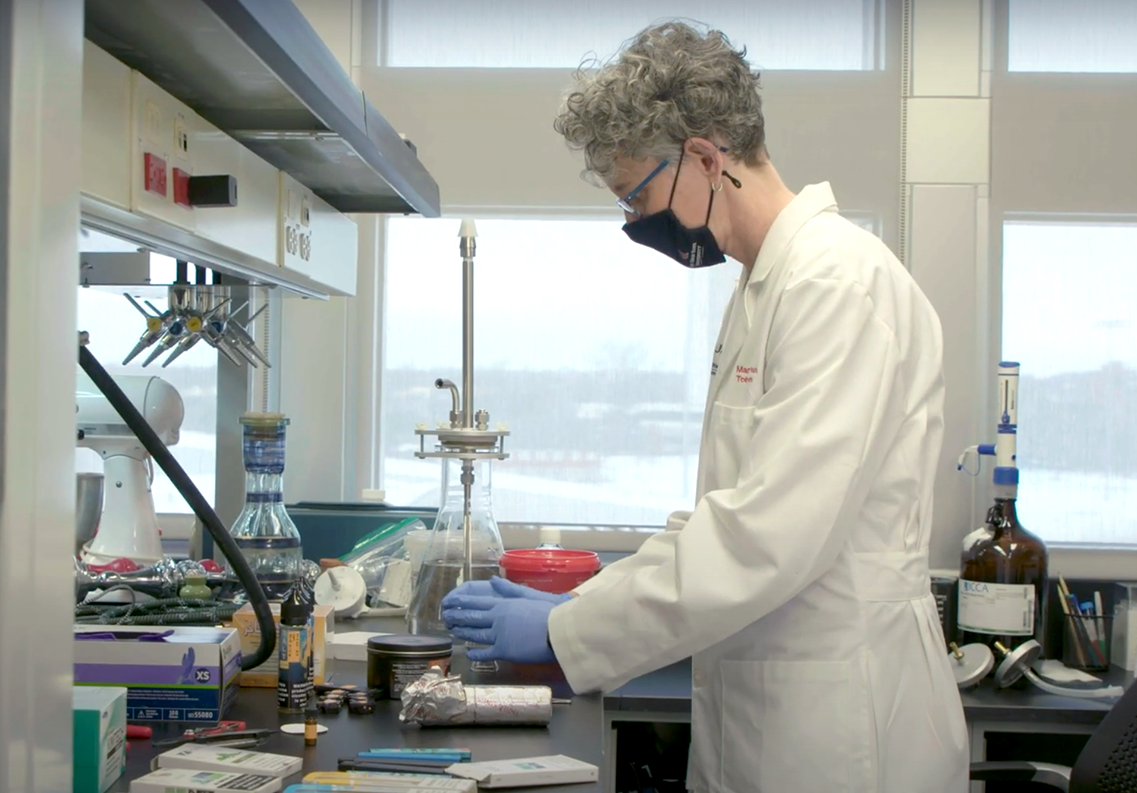College researcher explains dangers of e-cigarettes
Marielle Brinkman interviewed for national segment on vaping
By Denise Blough

Senior Research Scientist Marielle Brinkman was interviewed by Discovery Education, CVS Health Foundation and CATCH Global Foundation as part of the Be Vape Free education initiative, which aims to prevent the use of e-cigarettes among elementary, middle and high school-aged children.
In the segment, Brinkman explains the toxicity of nicotine, which is also used as an insecticide, and discusses her research testing the toxins in e-cigarette smoke. Once inhaled, this smoke has been shown to transform into harsh chemicals like formaldehyde and acid aldehyde, as well as nickel, chromium and lead.
“All of these things are lung irritants that cause inflammation in the lungs,” Brinkman said. “They have the potential to cause cancer. They have the potential to cause learning deficits.”
Research also suggests that adolescents who use e-cigarettes are more likely to start smoking traditional cigarettes.
“Bottom line — treat that e-cigarette like it’s a ticking bomb,” Brinkman said. “There are some really dire consequences to using nicotine. You end up sort of spending your lifetime chasing feeling better. Really if you’d never used nicotine in the first place, you wouldn’t feel that bad.”
The segment also includes interviews with Dr. Christy Sadreameli of Johns Hopkins University and Dr. Victor DeNoble, a former scientist for tobacco giant Phillip Morris.
About The Ohio State University College of Public Health
The Ohio State University College of Public Health is a leader in educating students, creating new knowledge through research, and improving the livelihoods and well-being of people in Ohio and beyond. The College's divisions include biostatistics, environmental health sciences, epidemiology, health behavior and health promotion, and health services management and policy. It is ranked 22nd among all colleges and programs of public health in the nation, and first in Ohio, by U.S. News and World Report. Its specialty programs are also considered among the best in the country. The MHA program is ranked 5th and the health policy and management specialty is ranked 21st.